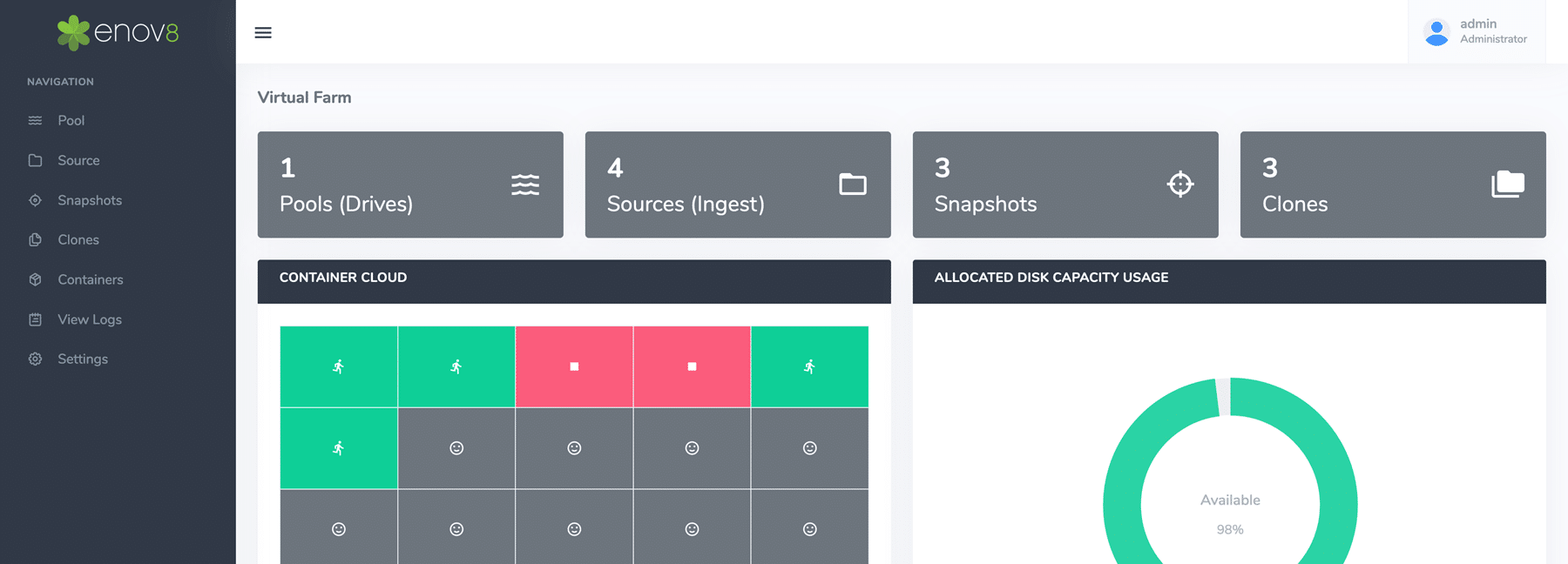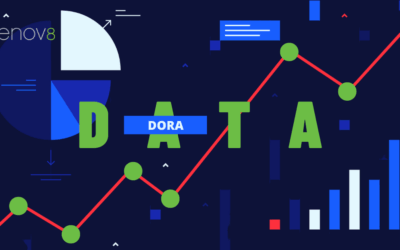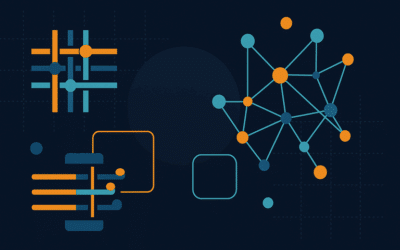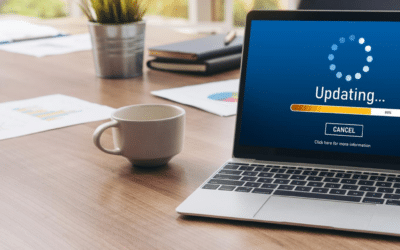
Data Cloning (aka Virtualization) – An Introduction
MAR, 2023
by Gourav Bais.
Author Gourav Bais.
Edited by Jane Temov
This post was written by Gourav Bais.Gourav is an applied machine learning engineer skilled in computer vision/deep learning pipeline development, creating machine learning models, retraining systems, and transforming data science prototypes to production-grade solutions.
The success of data-driven initiatives hinges on the accuracy of the data being used, and professionals in the field rely on real-time information to construct data models. However, these professionals typically do not work directly with the original dataset. Instead, they create replicas of the data in development environments using a process called data cloning.
Enov8 VirtualizeMe
*aka ‘vME’
DevOps that Data! You will never have to worry about getting realistic databases for dev, test and CICD again.
Data cloning involves creating precise duplicates of the target dataset through a mathematical technique, allowing for rapid provisioning in testing and development environments. This process is also referred to as database virtualization. In the following sections, we will explore data cloning in more detail.
What is Data Cloning
Data cloning, also known as database virtualization, is the process of creating a virtual copy of data, enabling users to work with the data without making physical copies. Data cloning involves creating exact duplicates of the target dataset through a mathematical technique, allowing for rapid provisioning in testing and development environments.
The process of data cloning has become increasingly important in today’s data-driven business environment, as organizations rely on real-time information to construct data models, and data accuracy is paramount. By cloning data instead of creating multiple physical copies, data cloning reduces the need for additional hardware and storage, resulting in cost savings for organizations.
Benefits of Data Cloning
There are several benefits of database virtualization, also known as data cloning, including:
- Improved agility: Database virtualization enables organizations to quickly and easily provision data to different teams and departments, accelerating application development and reducing time to market.
- Reduced costs: By cloning data instead of creating multiple physical copies, database virtualization reduces the need for additional hardware and storage, resulting in cost savings for organizations.
- Increased productivity: Database virtualization eliminates the need for manual data copying and synchronization, freeing up resources to focus on more critical tasks.
- Enhanced security: Database virtualization solutions can include features such as data masking and encryption to ensure sensitive data remains secure.
- Better collaboration: Database virtualization enables teams to work on the same data sets, ensuring consistency and accuracy across the organization.
Overall, database virtualization provides organizations with a flexible, scalable, and cost-effective way to manage data, which is essential in today’s data-driven business environment.
Data Cloning Use Cases
Data cloning has various applications, but we’ll discuss a few use cases here.
- DevOps: The data-cloning process creates a replica of the live dataset. You can leverage that copy or snap of the data for data backups or replications. You can do that for development and testing in development & test environments.
- Analytics: You can avail the data clone space to design reports and queries. Additionally, you can create business intelligence projects by integrating data from various sources. It helps you work with bulky data without affecting the production or original dataset.
- Cloud migration: Professionals can move TB-size data to the cloud securely and efficiently with data cloning. It creates data environments for testing that is space-efficient too.
- Production support: DevOps teams can leverage cloning of data for identifying and resolving major production issues by using virtual data environments. Data cloning enables you to perform root-cause analysis and changes validation to ensure that you’ve eliminated future problems.
- Platform upgrades: DevOps professionals are well aware of the headaches of the complexity and slowness of creating and refreshing project environments. This project environment behavior makes the projects go beyond the set budget and schedule. Therefore, DevOps professionals leverage data cloning to reduce the project ownership cost, accelerate the project creation and refreshing process, and trim the complexity. All these tasks they do by creating data copies and delivering those snaps to teams more efficiently than the usual process. Thus, teams don’t need original data to perform various tasks, and the production dataset remains as is. This process reduces the time taken to deliver the data and project attributes.
Is Data Cloning “Data Mirroring”?
No, Data Cloning (aka Database Virtualization) and data mirroring are not the same thing.
Database virtualization is a process of creating a full virtual copy of database, also known as data cloning, which allows users to work with the data without making physical copies. The virtual data can be provisioned to different environments quickly and easily, enabling faster development and testing.
On the other hand, data mirroring is a data protection technique that involves creating an exact copy of a database in real-time, to ensure that the data is always available in case of a failure or disaster. In data mirroring, changes made to the original database are immediately replicated to the mirrored copy, ensuring that the two copies remain in sync.
While both techniques involve creating copies of data, they serve different purposes. Database virtualization is primarily used for development and testing, while data mirroring is used for disaster recovery and high availability purposes.
Data Cloning Tools
There are various commercial tools available for cloning data. Some well-known ones are:
DELPHIX
Delphix, probably the best know database virtualization (aka Data Cloning) solution, is a platform that enables businesses to securely manage, automate, and deliver data on-demand to accelerate key applications, projects, and migrations. Delphix virtualizes data from multiple sources, including databases, files, and containers, and enables fast and secure access to data for development, testing, and analytics purposes without copying or moving it. This approach reduces the time and resources required for data management and enables organizations to make data-driven decisions faster.
REDGATE SQL CLONE
RedGate SQL Clone performs the data cloning on SQL server databases. This tool can fully copy the server databases in seconds, taking about 40 MB of space in the disk for each clone. This tool comes with a web app and built-in PowerShell. SQL Clone enables developers and testers to work on updated and isolated database copies to make the development process fast while making testing code and fixing bugs more efficient and accurate.
WINDOCKS
Windocks is a software company that provides a platform for delivering and managing data for development and testing. Their solution enables organizations to rapidly provision and manage data for multiple databases and applications, improving the efficiency and effectiveness of the development and testing process. Windocks allows teams to create and manage virtualized data environments and supports containerization for efficient deployment. Their platform is built on Docker containers and is compatible with SQL Server, Oracle, and other databases
vME *VIRTUALIZEME
Enov8 VirtualizeMe, the new kid (or sheep on the block), is a software product that enables the cloning and provisioning of data for testing and development purposes. VME provides an efficient and cost-effective solution for creating copies of data, allowing teams to replicate realistic environments for testing, training, and analysis. Based on a mix of Database Virtualization & Container based technology, VME users can quickly and easily create and manage virtual copies of databases, applications, and infrastructure components, ensuring that development and testing processes run smoothly and effectively. Through integration with Enov8 TDM, the sister product, VME also includes features such as data masking and synthetic data generation to ensure data privacy and security.
Enov8 vME, DevOps that Data: Screenshot
The Data Cloning Workflow
Once you have selected a tool that meets your needs, the next step is to familiarize yourself with the data-cloning process workflow. This workflow typically involves four general stages:
- Ingesting or loading data from the source
- Creating a data snapshot
- Cloning the data
- Provisioning the cloned data to the development or test environments.
While these steps may vary slightly depending on the specific data-cloning tool used, they are generally followed by most tools. In the following sections, we will discuss each step in detail.
Ingestion
To begin the data-cloning process, you should first open your chosen tool and log in with your credentials. Next, import the data from the source into the tool. You can use the Layout feature to view the schema or database connections, which will help you understand the data attributes and relationships. You can also verify the imported data if you know the live data.
Snapshot
Once the data is imported, the next step is to take snapshots of the data using the cloning tool. Select the data tables you want to clone and create a copy of the data.
Clone
After taking snapshots of the data, the cloning process becomes straightforward. Select the snaps of the data and clone them together. You may need to provide an address for the clone data to be saved. Once the cloning is complete, you can find the cloned data, along with all your files, in the folder where you saved it.
Provision
Finally, you can import the cloned data into your development or testing environment for analysis or testing purposes. The data-cloning process can be completed in just a few minutes and is made much easier, faster, and more efficient by the tools available today.
Conclusion
In conclusion, data cloning has become a popular and effective method for data management in today’s fast-paced business environment. By allowing teams to work with virtual copies of data, organizations can accelerate the development and testing process, reduce costs, and improve productivity. Moreover, data cloning enables companies to manage large and complex data sets with ease, while also providing robust security and privacy features. As data-driven projects become increasingly critical for businesses, data cloning will undoubtedly continue to be a valuable tool for streamlining and optimizing data management processes.
Othe Data Reading
Enov8 Blog: Test Data Manager – What makes a good Test Data Manager
Enov8 Blog: Test Data – Types of Data you should use for Software Tests
Relevant Articles
DORA Compliance – Why Data Resilience is the New Digital Battlefield
How Enov8 Helps Financial Institutions Align with the EU's Digital Operational Resilience Act Executive Introduction As of January 2025, the EU's Digital Operational Resilience Act (DORA) has become legally binding for financial institutions operating across the...
Data Fabric vs Data Mesh: Understanding the Differences
When evaluating modern data architecture strategies, two terms often come up: data fabric and data mesh. Both promise to help enterprises manage complex data environments more effectively, but they approach the problem in fundamentally different ways. So what’s...
What Is Release Management in ITIL? Guide and Best Practices
Managing enterprise software production at scale is no easy task. This is especially true in today’s complex and distributed environment where teams are spread out across multiple geographical areas. To maintain control over so many moving parts, IT leaders need to...
Test Environment: What It Is and Why You Need It
Software development is a complex process that requires meticulous attention to detail to ensure that the final product is reliable and of high quality. One of the most critical aspects of this process is testing, and having a dedicated test environment is essential...
PreProd Environment Done Right: The Definitive Guide
Before you deploy your code to production, it has to undergo several steps. We often refer to these steps as preproduction. Although you might expect these additional steps to slow down your development process, they help speed up the time to production. When you set...
What is Data Tokenization? Important Concepts Explained
In today’s digital age, data security and privacy are crucial concerns for individuals and organizations alike. With the ever-increasing amount of sensitive information being collected and stored, it’s more important than ever to protect this data from...













